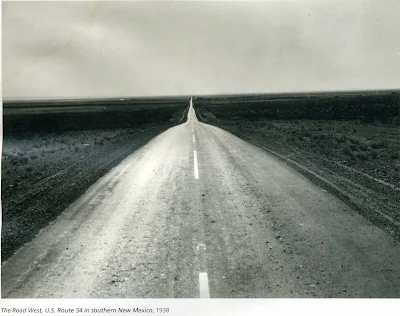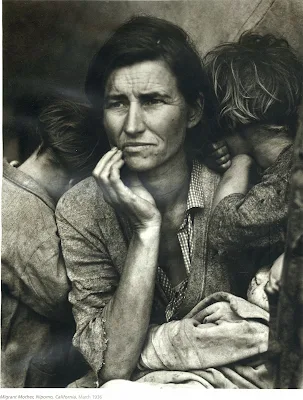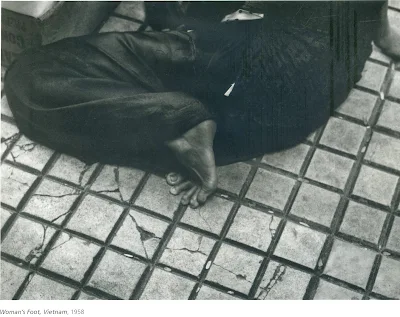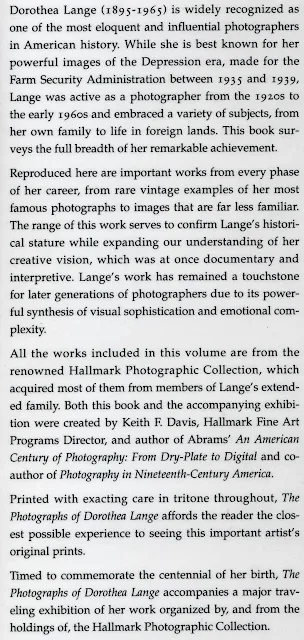«Κάτω
τα χέρια από τις φωτογραφίες. Εγώ δεν τις κακοποιώ. Ούτε τις «μαγειρεύω», ούτε
τις «τακτοποιώ».»
Αυτά
είναι τα λόγια της μεγάλης Αμερικανίδας φωτογράφου Dorothea Lange η
οποία μας έδωσε μια από τις πιο σημαντικές κοινωνικές καταγραφές του αιώνα μας.
Γεννήθηκε
στο New Jersey και η καταγωγή της ήταν γερμανική. Στην
παιδική της ηλικία χτυπήθηκε από πολιομυελίτιδα που της άφησε μια αναπηρία στο
βάδισμα. Σ’ αυτήν ακριβώς την αναπηρία όφειλε – όπως υποστήριζε η ίδια – την
ιδιαίτερη ευαισθησία της πάνω στον πόνο και τα βάσανα των συνανθρώπων της. Η D. Lange εκπαιδευόταν για δασκάλα, όταν το 1914 επισκέφθηκε το
στούντιο του Arnold
Genthe, ο οποίος και
της έδωσε την πρώτη της κάμερα και την ενθάρρυνε να ασχοληθεί με τη φωτογραφία.
Η
Dorothea αρχίζει να
φωτογραφίζει και το 1917-18 βρίσκεται να σπουδάζει φωτογραφία στο Columbia University με τον Clarence White. Στα τέλη του 1918 δουλεύει σαν εκτυπωτής
φωτογραφιών στο San
Francisco και λίγο αργότερα
σαν «ελεύθερη επαγγελματίας φωτογράφος», για να ανοίξει τελικά το δικό της
στούντιο φωτογραφίας στο Berkeley,
της California το οποίο και
κράτησε σε λειτουργία από το 1919 μέχρι το 1940.
Μετά
από δέκα χρόνια φωτογράφησης πορτραίτων στο στούντιο, και συγκλονισμένη από την
εικόνα των εξαθλιωμένων άνεργων και άστεγων συμπολιτών της, η Dorothea Lange βγαίνει στο δρόμο και ειδικότερα αρχίζει
τις καταγραφές στους φυσικούς χώρους των ανθρώπων. Νοιώθει πως επιτελεί
κοινωνικό έργο. Το 1935, προσλαμβάνεται από την Farm Security Administration (FSA) και αναλαμβάνει μαζί με άλλους φωτογράφους να καταγράψει την
εξαθλίωση των αμερικανών αγροτών. Απόγνωση, απελπισία, αλλά και υπερηφάνεια και
η αξιοπρέπεια των φτωχών αγροτικών οικογενειών, καταγράφονται από την Lange με ένα τρόπο μοναδικό.
Το
1941 βραβεύεται με την περίφημη υποτροφία Guggenheim, αλλά το έργο που αναλαμβάνει μένει
ανολοκλήρωτο λόγω του δεύτερου Παγκοσμίου Πολέμου.
Η
υγεία της Lange
– μετά τον πόλεμο – δεν είναι καλή, γεγονός που την αναγκάζει να μείνει άνεργη
για μεγάλο χρονικό διάστημα.
Το
1950 διεξάγει σεμινάρια φωτογραφίας και από το 1954 εργάζεται σαν ανεξάρτητη
φωτογράφος.
Αργότερα
συνοδεύει και βοηθά – ως ανεξάρτητη φωτογράφος και πάλι – τον σύζυγο της Paul Taylor στις αποστολές του στην Ασία, τη Νότια
Αμερική, και τη Μέση Ανατολή, μέχρι το
τέλος της ζωής της.
Πεθαίνει
από καρκίνο το 1965 στην California,
λίγο πριν ανοίξει η μεγάλη αναδρομική της έκθεση στο Μουσείο Μοντέρνας τέχνης
της Νέας Υόρκης (ΜΟΜΑ).
American
photographer. From 1914 to 1917 she attended the New York Training School for
Teachers and there decided to become a photographer, partly influenced by
visits to the photographer Arnold Genthe.
From 1917 to 1918
she attended a photography course run by Clarence H. White at Columbia
University, NY. Lange moved to San Francisco in 1918, and in 1919 she set up a
successful portrait studio where she took works such as Clayburgh Children, San
Francisco (1924; Oakland, CA, Mus.).
In the late 1920s
she became dissatisfied with studio work and experimented with landscape and
plant photography, although she found the results unsatisfactory. With the
Stock Market crash of 1929 Lange decided to look for subjects outside her
studio. Turning to the effects of the economic decline she took photographs
such as General Strike, San Francisco (1934; Oakland, CA, Mus.).
She had her first
one-woman show at the Brockhurst Studio of Willard Van Dyke in Oakland, CA
(1934), and in the same year met the economist Paul Schuster Taylor, under whom
she worked for the California State Emergency Relief Administration in 1935.
Later that year she
transferred to the Resettlement Administration, set up to deal with the problem
of the migration of agricultural workers. She continued to work for this body,
through its various transformations (including its time as the Farm Security
Administration), until 1942.
Migrant
mother. Η εμβληματική φωτογραφία από την Ντοροθέα Λαγκ που σημάδεψε μια
ολόκληρη εποχή. Η φωτογράφος αιχμαλώτισε με το φακό της τα
στιγμιότυπα από την πρόχειρη σκηνή μιας οικογένειας, η οποία ταξίδευε σε
αναζήτηση εργασίας στους αγρούς της Καλιφόρνιας. Η Φλόρενς Όουενς Τόμπσον
(Florence Owens Thomspon) απεικονίζεται στη φωτογραφία με δύο από τα επτά
παιδιά της. Η καρτερικότητα στο βλέμμα της και η απόλυτη δυστυχία που βίωνε με
την οικογένειά της αντικατόπτριζαν τον εφιάλτη του αμερικανικού ονείρου. Οι
απόκληροι της κοινωνίας βρίσκονταν στην καρδιά της Γης της Επαγγελίας. One of
her most famous photographs from this project is Migrant Mother, Nipomo,
California (1936; Washington, DC, Lib. Congr.), which depicts an anxious,
distracted mother and three children.
In 1939, in
collaboration with Taylor, who provided the text, she published An American
Exodus, which dealt with the same social problems. In 1941 she was awarded a
Guggenheim Fellowship, and this allowed her to take a series of photographs of
religious groups in the USA, such as those of the Amish people (1941; Oakland,
CA, Mus.). In 1942 she worked for the War Relocation Authority and from 1943 to
1945 for the Office of War Information in San Francisco.
Illness prevented
her working from 1945 to 1951, after which she produced photographs of the
Mormons and of rural life in Ireland for articles in Life in 1954 and 1955.
In 1958–9 she
worked with Taylor in East Asia and in 1960 accompanied him to South America.
She worked in Egypt and the Middle East in 1962–3, producing such photographs
as Procession Bearing Food to the Dead, Upper Egypt (1963; Oakland, CA, Mus.)
in the detached, documentary style that characterizes all her work. From Grove
Art Online © 2009 Oxford University Press
Πηγή:
DPGR















































































Τόσο χρώμα σε ασπρόμαυρες φωτογραφίες...!!!
ΑπάντησηΔιαγραφήΕξαιρετική ανάρτηση!!!